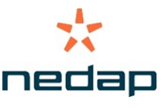"Not only are first-lactation cows facing a new environment, a new ration and numerous physical changes that accompany giving birth, but they also have to adapt to a new social structure and daily routine, all of which is out of their control,” says Steve Pavelski, Nedap large herd specialist. “All of this adds up to stress and behavioral hurdles for these animals.”
To ease this transition, many producers are grouping first-lactation cows separately and using automated monitoring tools to better support them in the weeks after calving. These strategies are proving critical to long-term productivity.
First-lactation learning curve
How different are fresh heifers from mature cows? Research says: Quite a bit.
For example, first-lactation cows have different habits from older cows:[1]
- They are often more timid at the feed bunk due to their lower social status, especially during the week of calving, and eat less than other cows throughout the transition period.
- Researchers also found that younger animals eat more slowly and more frequently than cows in their second lactation or higher.
- Plus, first-lactation cows have different resting habits. They have shorter lying bouts, change their lying position more frequently and walk more than older animals.
- When grouped with other first-lactation cows, they spend more time eating and lying down than when mixed with mature cows.
“This is a whole new scene for these animals,” says Pavelski. “We work with many herds that keep fresh heifers in smaller groups for the first two weeks to 30 days after calving. Sending a fresh heifer, especially one fewer than 10 days in milk, into a crowded pen often sets her up to struggle.”
Data-driven results
Research shows poor transition from pregnancy to lactation often results in the loss of 10-20 pounds of peak milk yield, which could equal 2,000-4,000 pounds of untapped milk yield.[2]
However, dairies with access to accurate monitoring data have discovered that not only do they have a better handle on how all cows fare during transition, but also that moving healthy older cows out of transition groups faster results in improved performance of first-lactation cows, too.
“The Alta Cow Watch system is very effective for our day-to-day work and has made checking fresh cows more efficient,” says Ryan Nelson, Ohlde Family Farms, Linn, Kansas. “We’re able to catch something sooner so we can get her back to 100% and back to a good lactation.”
Better grouping, better gains
Monitoring system data fed into herd management software enables users to establish movement criteria. As trends emerge, reports indicate how well animals are adjusting to lactation demands and offer insight as to when cows should leave the fresh pen for lactation groups.
This strategy keeps cows that need more attention, such as first-lactation animals, in smaller groups while returning those meeting performance criteria to lactation groups and a higher plane of nutrition after a shorter fresh pen stay.
“The mature cows can move to the lactation group quickly, giving first-lactation heifers the space and time to adapt at their own pace,” Pavelski explains. “Monitoring data gives us a clear picture of how they’re adjusting and when interventions are needed.”
With actionable data in hand, dairies can make quicker, more accurate decisions. Instead of holding all cows in transition pens longer than necessary, producers can move animals based on performance, not guesswork or predetermined timeframes.
“The goal is to manage each cow as an individual, while letting the rest of the herd just be cows,” Pavelski concludes.
Visit nedap-livestockmanagement.com to learn more.
About Nedap
Nedap creates Technology for Life: technological solutions that help people become more successful and happier in their professional lives. Nedap’s Digital Twin Technology bridges the physical and digital worlds, offering real-time insights and automation in Livestock, Healthcare, Retail, and Security. Nedap Livestock helps farmers to optimize the performance and well-being of individual cows while minimizing workload and resources. This way, Nedap improves life on the farm for both people and animals, helping to reduce the environmental footprint of dairies worldwide.
Nedap N.V. has a workforce of over 1,000 employees and operates on a global scale. The company was founded in 1929 and has been listed on Euronext Amsterdam since 1947. Its headquarters are located in Groenlo, The Netherlands.












